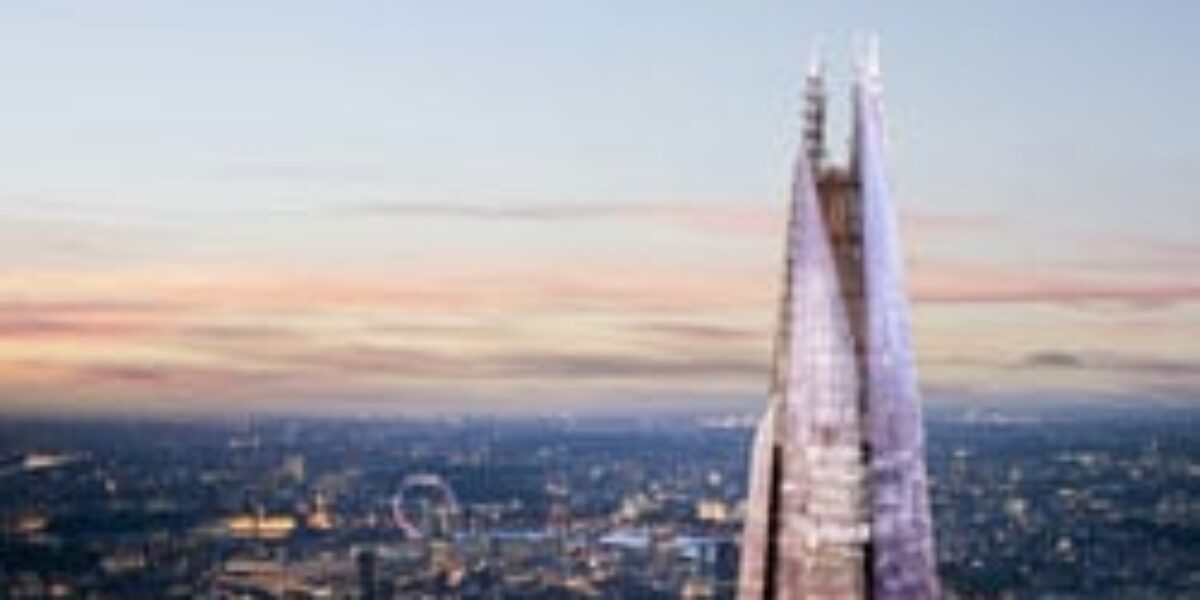The Shard: He Who Dares Wins
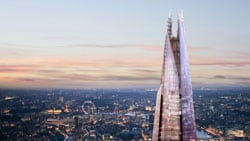 Today, sparkling in the summer sun, the Shard looks stunning, splitting the London skyline like a gargantuan slice of crystal fallen from space. This fledgling skyscraper is already a cover star. It has replaced the Gherkin as the focal point of the beautiful, stylized helicopter footage that is interspersed throughout Alan Sugar’s BBC program The Apprentice. It is the subject of many, many images on photo-sharing websites such as Facebook and Flickr. The building is now rapidly approaching completion: Its final steel section was lifted into place in March, and it will be inaugurated on July 5.
Today, sparkling in the summer sun, the Shard looks stunning, splitting the London skyline like a gargantuan slice of crystal fallen from space. This fledgling skyscraper is already a cover star. It has replaced the Gherkin as the focal point of the beautiful, stylized helicopter footage that is interspersed throughout Alan Sugar’s BBC program The Apprentice. It is the subject of many, many images on photo-sharing websites such as Facebook and Flickr. The building is now rapidly approaching completion: Its final steel section was lifted into place in March, and it will be inaugurated on July 5.
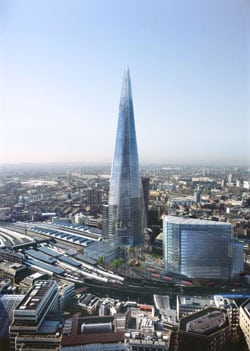 The Shard, the European Union’s tallest building, has been shrouded in storm clouds ever since it was announced in 2000. Few structures in Britain have so dominated architectural debate. Opponents believe that it destroys the scale of the city and disrupts historic views. Supporters maintain that it offers the shock of the new – a bold, innovative and creative design. Either way, there is now doubt that the Shard is now an iconic landmark on London’s skyline to compare or compete with the Gherkin, St. Paul’s Cathedral, Wembley Stadium, Battersea power station, and the BT Tower.
The Shard, the European Union’s tallest building, has been shrouded in storm clouds ever since it was announced in 2000. Few structures in Britain have so dominated architectural debate. Opponents believe that it destroys the scale of the city and disrupts historic views. Supporters maintain that it offers the shock of the new – a bold, innovative and creative design. Either way, there is now doubt that the Shard is now an iconic landmark on London’s skyline to compare or compete with the Gherkin, St. Paul’s Cathedral, Wembley Stadium, Battersea power station, and the BT Tower.
Developer Irvine Sellar has come through a lot to get the Shard into the air. From the start, the 310-metre-tall tower near London Bridge station in Southwark has had plenty of doubters. A fractious partnership with former development partners was aggravated by lawsuits and an expensive and lengthy public-planning inquiry. The whole scheme was almost abandoned when Sellar attempted to secure funding in 2007 at the moment that the world’s credit markets fell into crisis and the City of London’s office market began to appear volatile and oversupplied. Sellar proved his cynics wrong when he secured backing from a consortium of Qatari banks to bankroll the ambitious scheme.
The Shard was designed in 2000 by Italian architect Renzo Piano, best known for his role in creating the Pompidou Centre in Paris. Piano says that his design is inspired by old pictures of London’s church spires and ships’ masts on the Thames. The design incorporates the sophisticated use of glazing, with façades of angled glass panes that are intended to reflect sunlight and the sky so that the appearance of the building changes according to the weather and seasons. Since construction commenced in March 2009, the Shard has established a series of firsts for a UK building: Piano’s first UK commission, a pioneering top-down construction strategy enabling the substructure and the superstructure to get underway simultaneously, London’s largest ever continuous concrete pour, and UK’s tallest crane, currently at 255 metres high.
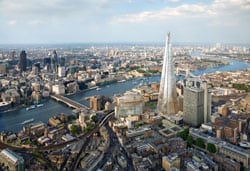 According to Sellar, “the Shard is making a positive impact on London’s skyline and there is discernible excitement among Londoners as the building nears completion. It is a ‘vertical town’ that includes a viewing gallery, restaurants, and a five star Shangri-La Hotel, which will all be open to the public, as well as residences and offices.” The public viewing gallery will be located at the top of the tower and is expected to draw over two million visitors a year.
According to Sellar, “the Shard is making a positive impact on London’s skyline and there is discernible excitement among Londoners as the building nears completion. It is a ‘vertical town’ that includes a viewing gallery, restaurants, and a five star Shangri-La Hotel, which will all be open to the public, as well as residences and offices.” The public viewing gallery will be located at the top of the tower and is expected to draw over two million visitors a year.
The Shard received planning permission from the Borough of Southwark and then survived a public inquiry that examined whether or not it interfered unacceptably with views of St Paul’s Cathedral from Hampstead Heath. The inquiry ruled that it did not, and John Prescott, then the minister in charge of planning, declared that he thought the proposed tower to be of the highest architectural quality. Ken Livingstone, then mayor of London, was also an eager supporter, keen to set a precedent for the many towers he wanted built in London. His plan was to encourage tall buildings on sites next to large interchanges on the grounds that it would concentrate people as close as possible to public transport.
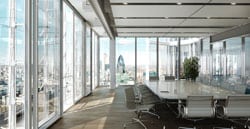 When the global recession hit in 2007, it seemed unlikely that such an expensive and complex work could be built, and many expected Sellar to sell the site and bank the profit that came with getting planning permission. The project was saved by the Qataris who, as part of a strategy of acquiring glamorous London developments, acquired an 80% stake in 2008. As the Shard’s construction was financed by Sharia-compliant investment, which forbids earning money through interest payments, most banks and companies connected to either the gambling or alcohol industries are unlikely to receive permission to lease space in the Shard.
When the global recession hit in 2007, it seemed unlikely that such an expensive and complex work could be built, and many expected Sellar to sell the site and bank the profit that came with getting planning permission. The project was saved by the Qataris who, as part of a strategy of acquiring glamorous London developments, acquired an 80% stake in 2008. As the Shard’s construction was financed by Sharia-compliant investment, which forbids earning money through interest payments, most banks and companies connected to either the gambling or alcohol industries are unlikely to receive permission to lease space in the Shard.
Are you the kind of high flyer who fancies living in the clouds? Ten of the Shard’s properties are expected to fetch between £30 million and £50 million each, and they will be the first to offer their owners a view of the sea from London – on a clear day at least. Living in the highest homes in Western Europe, occupants will be able to spot ships in the North Sea 44 miles away as well as the grandstand at Ascot racecourse in Berkshire. Just don’t lean over the balcony too much.
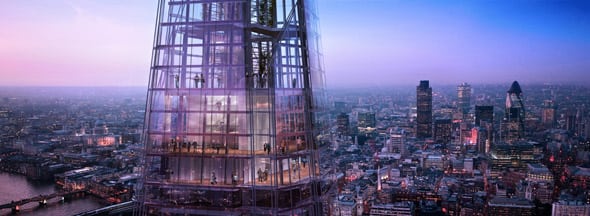
Irvine Sellar
Sellar started in business with a clothing stall in London’s East End. He has had a long and varied career spanning almost five decades but is probably best known for two aspects of his career. Firstly, he was the owner of Mates, once one of the UK’s largest retail chains. Secondly, he is the developer responsible for bringing the Shard to London. At its peak, Mates was Britain’s largest high-street fashion chain, with more than 90 stores around the UK. It was the first store to sell both men’s and ladies clothing from the same outlet and was at the heart of the Carnaby Street fashion revolution in the 1960s. Sellar sold the business in the 1980s and switched his attention to the real estate sector. He created the stock market listed Ford Sellar Morris, which become noted both for its development as well as its corporate acquisitions. After the demise of the listed real estate sector in the early 1990s, he established Sellar Property Group, which concentrates on development, investment and trading. One of his key acquisitions was the purchase in 1998 of Southwark Towers adjacent to London Bridge Station. Irvine saw the potential the site, and he has spent more than a decade ensuring that the Shard got built there.
Baby Shard Grows Up
London Bridge Quarter, an urban regeneration project that includes the iconic Shard building adjacent to London Bridge Station, recently marked a further milestone with the topping out of its office building The Place. Owned by Sellar Property Group and designed by Renzo Piano, the team responsible for the Shard, The Place will be completed in spring 2013. It is London’s largest speculative office building currently under construction, and it will be ready for occupation at a time when there is a shortage of comparable prime buildings available for letting.
The 17-storey development will contain large, light, open and highly flexible floor spaces. It has been dubbed “Baby Shard” by some because it shares architectural, design and cultural DNA with Piano’s pointy skyscraper. The building provides 16 floor plates of between 21,000 square feet and 31,000 square feet and features naturally ventilated winter gardens on several floors as well as a landscaped roof terrace with spectacular views of London.
According to Irvine Sellar, chairman of Sellar Property Group, “The Place’s location, on top of one of London’s busiest transport hubs, fulfils the needs of the employer and employees alike, as it is served by a mainline station, two underground lines, Thames Link and a large number of bus routes making the daily commute so much easier.” The Place has an Excellent BREEAM sustainability rating, its active double skin façade ensuring that only 12% of the sun’s heat passes into the building. This reduces the need for cooling while still maximising natural daylight.
In addition to The Place and the Shard, the London Bridge Quarter includes a new public piazza, a new station concourse and bus station and an underground retail mall. The project is already having a major impact in the Southwark area, making it increasingly attractive as a location for business, leisure and living.


